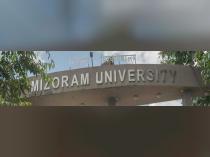What is Mizoram University JEE Main cutoff 2023?
-
1 Answer
-
Mizoram University cutoff 2023 for BTech is based on JoSAA Main scores followed by JoSAA Counselling and the CSAB Counselling. As per Mizoram University cutoff 2023, JEE Main cutoff was concluded after Round 8 Seat Allotment. Tabulated below is the Round 1 and the Last Round closing ranks for Mizoram University for General category All India candidates:
Course R1 (Closing Rank) Last Round (Closing Rank) B.Tech. in Civil Engineering 62269 796683 B.Tech. in Computer Engineering 46292 194055 B.Tech. in Electrical Engineering 60888 338365 B.Tech. in Electronics and Communication Engineering 58155 320005 B.Tech. in Information Technology 53489 195933
Similar Questions for you
Nirma University JEE Main cutoff 2024 has been released for admission to BE/BTech and BArch courses. In 2024, the cutoff for the General AI category was 22002 in the last round for admissions at Nirma University for the BArch programme. For the BE/BTech course, the cutoff for the General AI category was closed at 10642 for admissions to B.Tech. in Civil Engineering course specialisations.
If candidates are facing issue in live photo capture, it can be due to mismatch from photo uploaded in Aadhar. For this, they need to visit the Aadhar update centre and get their current photo updated in the Aadhaar database.
The issue can also be due to any servor error/slow internet connectivity for which candidates can try uploading it after some time. Also, there can be a case of laptop/computer not supporting the webcame, for this, candidates can upload the photo using QR code provided in the application process.
Who work on the rocket-propelled vehicles, they apply the principles of Mathematics, Physics, and Material Science to solve challenges related to these vehicles. Rocket Scientists are involved in the process of design and development of the vehicles such as small drones, satellites, and commercial aeroplanes.
Yes, this field is considered hard. It is complex and demands high precision. There can be extreme consequences for minor errors. The overall field is extremely challenging as it requires to apply the basic scientific principles to design and develop rockets. It requires sophisticated engineering with careful material selection, and allows narrow margin for error.
The following are the qualification which can help you to become a rocket scientist:
· Bachelor's Degree such as B.Tech/B.E can take up to four years to complete.
· You can do a two years Master's Degree M.Tech/M.E./M.S. after graduation.
· For advanced level study in this field, you can also do Ph.D and Research.
Taking an Exam? Selecting a College?
Get authentic answers from experts, students and alumni that you won't find anywhere else
Sign Up on ShikshaOn Shiksha, get access to
- 65k Colleges
- 1.2k Exams
- 681k Reviews
- 1800k Answers


